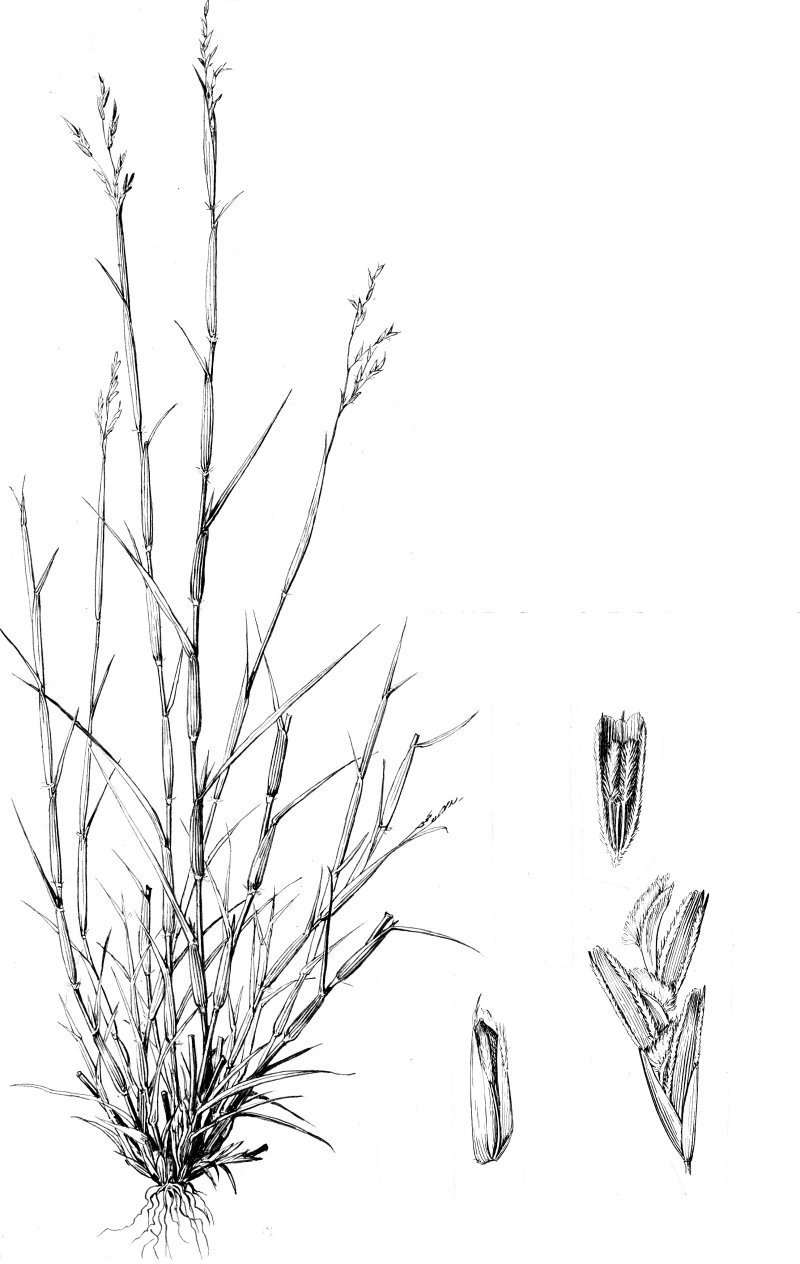
Triplasis purpureus (Walt.). Sandgrass Habit: Slender tufted annual, often purple. Culms: 30-75 cm. tall, erect, widely spreading or ascending, wiry, branched below, pubescent at the nodes. Blades: Upper very short, 6-20 mm. long, less than 2 mm. wide, the lower 4-8 cm. long, 2-4 mm. wide, flat or loosely involute, rigid, scabrous, sparsely ciliate. Sheaths: Shorter than the internodes, more or less scabrous, or pubescent, often villous at the throat. Ligule: A ring of hairs less than 1 mm. long. Inflorescence: Terminal panicles 3-7 cm. long, the few stiff branches finally divergent; smaller panicles (partially hidden in the sheaths) produced at the nodes late in the season, and a single cleistogamous spikelet, reduced to a single large floret at the base of the lower sheaths. Spikelets: Usually rose-purple, 2-5-flowered, 5-8 mm. long, short pediceled, the florets remote, rachilla slender disarticulating above the glumes and between the florets. Glumes: Nearly equal, 2-4 mm. long, shorter than the lower lemmas, smooth, 1-nerved, acute. Lemmas: About 4 mm. long, oblong, 2-lobed at the apex, with erose-truncate lobes; 3-nerved, the nerves and callus densely short villous, midvein excurrent in a short awn, scarcely exceeding the truncate lobes. Palea: Shorter than its lemma, broad, the nerves nearly marginal and densely silky-villous from the middle to the apex. Fruit: Grain about 2 mm. long. Habitat: Sandy places. August-September. Kansas Range: Southwest, central and northeast. Use: Of some value in holding sand. Remarks: In autumn the swollen sheaths containing cleistogenes are conspicuous. Synonyms: Triplasis intermedia Nash